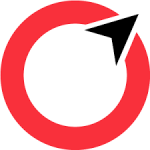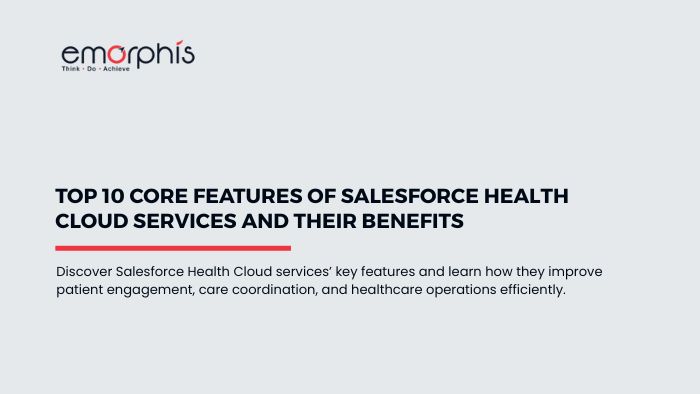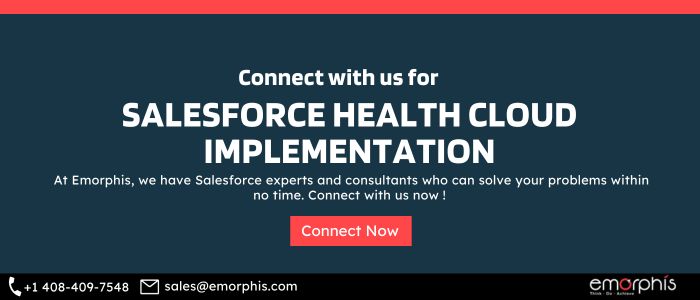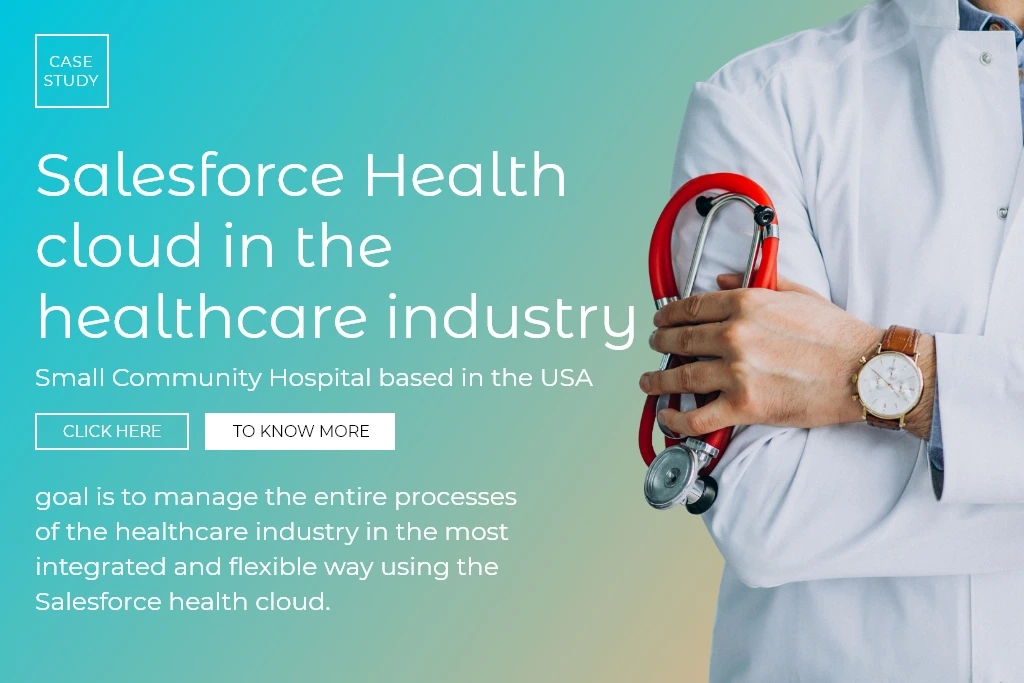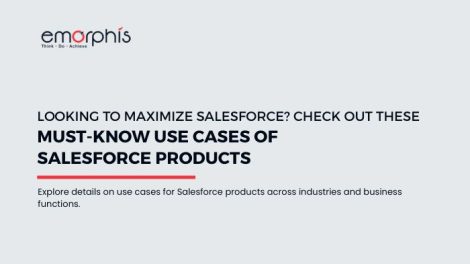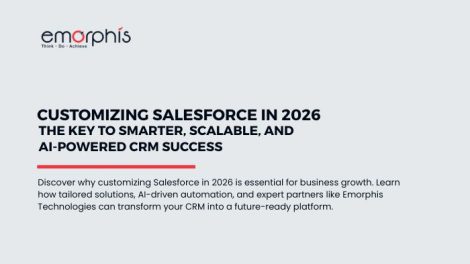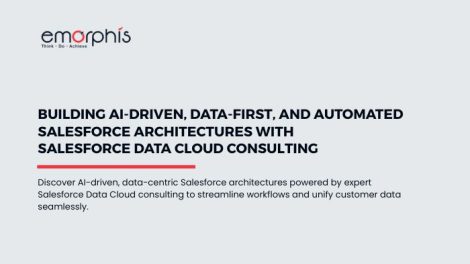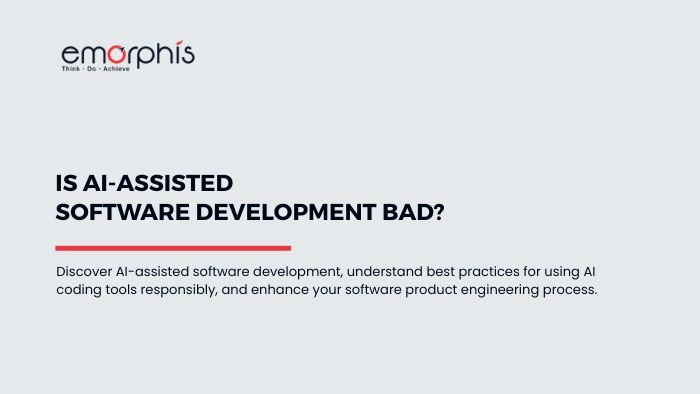Introduction
Healthcare is evolving rapidly, with technology playing a critical role in improving patient care, streamlining operations, and enabling data-driven decision-making. To meet these challenges, healthcare organizations are increasingly adopting Salesforce Health Cloud services, a platform designed to unify patient data, enhance care coordination, and improve overall outcomes.
Now, we will explore the core features of Salesforce Health Cloud services and their specific benefits for healthcare organizations, providers, payers, and patients.
1. Patient 360 View
The Patient 360 View is a foundational feature of Salesforce Health Cloud services. It creates a single, comprehensive profile of each patient, aggregating all clinical, administrative, and behavioral data. This feature ensures that healthcare teams have a complete understanding of the patient at any point in their care journey.
- Clinical Records Integration: Pulls data from EHR and EMR systems, including lab results, imaging reports, diagnoses, and treatment history. For example, a cardiologist can see previous echocardiograms, medication history, and risk factors without accessing multiple systems.
- Medications and Allergies: Consolidates all prescription details, dosage schedules, and known allergies, reducing the risk of adverse drug interactions.
- Behavioral and Social Determinants of Health: Tracks lifestyle habits, diet, physical activity, and social factors such as access to transportation or living conditions, which impact care planning.
- Wearable and IoT Device Data: Integrates patient-generated health data from smartwatches, blood pressure monitors, or continuous glucose monitors, offering real-time insights for proactive care.
- Historical Care Plans: Provides access to previous care plans, interventions, and follow-ups, enabling clinicians to see trends and patterns in the patient’s health journey.
Benefits of Patient 360 View:
- For Providers: Quick access to all relevant patient information, enabling faster and more accurate diagnosis and treatment planning.
- For Patients: Personalized and proactive care because the care team has a full understanding of their health history and current status.
- For Payers: Helps insurers identify high-risk patients and design preventive care programs that reduce costs and improve outcomes.
- For Public Health Agencies: Supports population health analysis and preventive care initiatives by aggregating patient-level data across communities.
2. Care Team Collaboration
Care coordination is essential in modern healthcare, especially for patients with chronic conditions or complex treatment plans. Salesforce Health Cloud services offer advanced tools for care team collaboration, enabling real-time communication and task management among healthcare professionals.
- Shared Care Plans: All members of the care team—including physicians, nurses, specialists, and social workers—can view, edit, and update the patient’s care plan in real-time. For example, a primary care physician can assign a follow-up task to a nurse while a cardiologist updates medication instructions.
- Task Assignment and Tracking: Enables assigning responsibilities to specific team members, tracking their progress, and ensuring accountability for patient outcomes.
- Secure Messaging: HIPAA-compliant messaging allows team members to discuss sensitive patient information without compromising security.
- Alerts and Notifications: Real-time notifications alert care teams to critical events, such as abnormal lab results or missed appointments, ensuring timely interventions.
- Collaboration Across Locations: Enables teams in multiple facilities or telehealth providers to work together seamlessly, ensuring consistent care regardless of location.
Benefits of Care Team Collaboration:
- For Providers: Reduces miscommunication, improves clinical decision-making, and ensures continuity of care.
- For Patients: Care is better coordinated, reducing duplication of tests, delays, and errors.
- For Payers: Enhanced care coordination helps lower costs by avoiding unnecessary procedures and hospital readmissions.
- For Healthcare Administrators: Streamlines workflows, improves staff efficiency, and ensures all care tasks are tracked and completed on time.
Click the image to check the case study.
3. Personalized Patient Engagement
Patient engagement is a critical component of value-based care. Salesforce Health Cloud services provide tools to engage patients actively, improving adherence to treatment plans, satisfaction, and health outcomes.
- Automated Appointment Reminders: Patients receive reminders via SMS, email, or app notifications, reducing no-shows and missed appointments.
- Patient Portals: Secure portals allow patients to view lab results, upcoming appointments, care instructions, and personalized health advice.
- Educational Content Delivery: Health Cloud can deliver targeted educational material, such as disease management tips, preventive care guidance, or lifestyle improvement recommendations.
- Follow-Up Notifications: Automated follow-ups after visits ensure patients adhere to care plans, medications, and post-treatment instructions.
- Feedback Collection: Surveys and questionnaires allow healthcare providers to collect insights on patient satisfaction, care effectiveness, and engagement levels.
Benefits of Personalized Patient Engagement:
- For Providers: Encourages patient participation in their own care, which improves adherence and outcomes.
- For Patients: Receives timely guidance, reminders, and education, leading to better self-management and health awareness.
- For Payers: Engaged patients are more likely to follow preventive care recommendations, reducing costly interventions.
- For Public Health Agencies: Improved patient engagement supports community health initiatives and preventive care programs, increasing overall population health.
4. AI-Powered Analytics and Predictive Insights
One of the most transformative aspects of Salesforce Health Cloud services is its built-in AI and analytics capabilities, powered by Einstein AI. This feature turns vast amounts of patient and operational data into actionable insights, enabling proactive care and informed decision-making.
- Predictive Risk Scoring: AI models analyze patient history, lifestyle data, and clinical metrics to identify patients at high risk for complications or readmissions. For example, a patient with chronic heart failure can be flagged early for preventive interventions.
- Care Gap Analysis: Automatically detects missed preventive screenings, vaccinations, or follow-up visits, helping providers close gaps in care.
- Next-Best Actions: Suggests actionable steps for care teams, such as scheduling a telehealth check-in or modifying medication plans based on patient trends.
- Population Health Management: Aggregates and analyzes data across patient populations to identify trends, assess program effectiveness, and optimize resource allocation.
- Operational Analytics: Tracks key performance metrics such as patient throughput, bed occupancy, and treatment outcomes for informed management decisions.
Benefits for Stakeholders:
- Providers: Make data-driven clinical decisions, reduce complications, and plan interventions proactively.
- Patients: Receive timely care and preventive guidance tailored to their individual risk factors.
- Payers: Identify high-risk members and implement preventive programs to reduce claims costs.
- Public Health Agencies: Gain insights into population health trends, enabling targeted interventions for communities.
5. Data Security and Compliance
Healthcare organizations handle highly sensitive patient information. Salesforce Health Cloud services provide robust security and compliance measures to protect data and maintain regulatory adherence.
- HIPAA Compliance: Ensures protected health information (PHI) is handled securely according to U.S. regulations.
- Global Standards Compliance: GDPR and other international healthcare privacy regulations are supported, making Health Cloud suitable for global deployments.
- Role-Based Access Control: Administrators can assign precise permissions based on roles, limiting access to sensitive information only to authorized personnel.
- Audit Trails: Tracks all user activity on patient records, providing accountability and supporting regulatory reporting.
- Data Encryption: Protects information both at rest (stored data) and in transit (during communication between systems).
- Automated Alerts: Security monitoring tools flag suspicious activity or unauthorized access attempts.
Benefits for Stakeholders:
- Providers: Maintain patient trust while mitigating risks of data breaches.
- Patients: Confidence that their private health information is secure and used responsibly.
- Payers: Secure sharing of sensitive claims and member data without regulatory concerns.
- Healthcare Administrators: Simplifies compliance management and reduces the likelihood of fines or legal issues.
6. Integration with EHR/EMR Systems
Healthcare systems rely on multiple platforms for clinical and administrative functions. Salesforce Health Cloud services offer seamless integration with these systems, ensuring a connected healthcare ecosystem.
- Major EHR/EMR Integrations: Supports platforms like Epic, Cerner, Allscripts, and Meditech, pulling clinical data into a unified patient profile.
- Lab and Diagnostic System Integration: Automatically syncs lab results, imaging reports, and pathology data, eliminating manual entry.
- Telehealth and Remote Monitoring: Incorporates virtual consultation records, wearable data, and remote monitoring results into the patient profile.
- Other Salesforce Products: Health Cloud connects with Marketing Cloud (for patient outreach), Service Cloud (for case management), and Data Cloud (for analytics and AI insights).
- Standard APIs and FHIR Compliance: Ensures secure, scalable, and interoperable data exchange across platforms.
Benefits for Stakeholders:
- Providers: Access a complete patient history in one place, improving diagnostic accuracy and reducing redundant tests.
- Patients: Experience a more seamless care journey, with fewer delays and better-informed providers.
- Payers: Receive comprehensive patient data to manage claims, member health, and risk effectively.
- Healthcare Administrators: Simplifies IT management, reduces integration complexity, and enhances workflow efficiency.
7. Health Analytics and Reporting
Salesforce Health Cloud services provide advanced analytics and reporting tools that turn data into actionable insights for better healthcare outcomes.
- Customizable Dashboards: Care teams and administrators can create dashboards to visualize patient metrics, care outcomes, appointment trends, and operational KPIs.
- Real-Time Reporting: Monitor active cases, patient progress, treatment outcomes, and resource utilization instantly.
- Trend Analysis: Track patterns in chronic disease management, medication adherence, and hospital readmissions.
- Predictive Forecasting: Project future resource needs, such as staffing or medication inventory, based on historical and real-time data.
- Quality Metrics Tracking: Measure clinical quality metrics, patient satisfaction scores, and compliance indicators for continuous improvement.
Benefits for Stakeholders:
- Providers: Make data-driven clinical decisions, optimize care plans, and improve patient outcomes.
- Patients: Benefit from timely interventions guided by actionable insights.
- Payers: Identify high-cost patients and target interventions for better cost management.
- Administrators: Optimize operational efficiency, staffing, and resource allocation.
Click the image to check the case study.
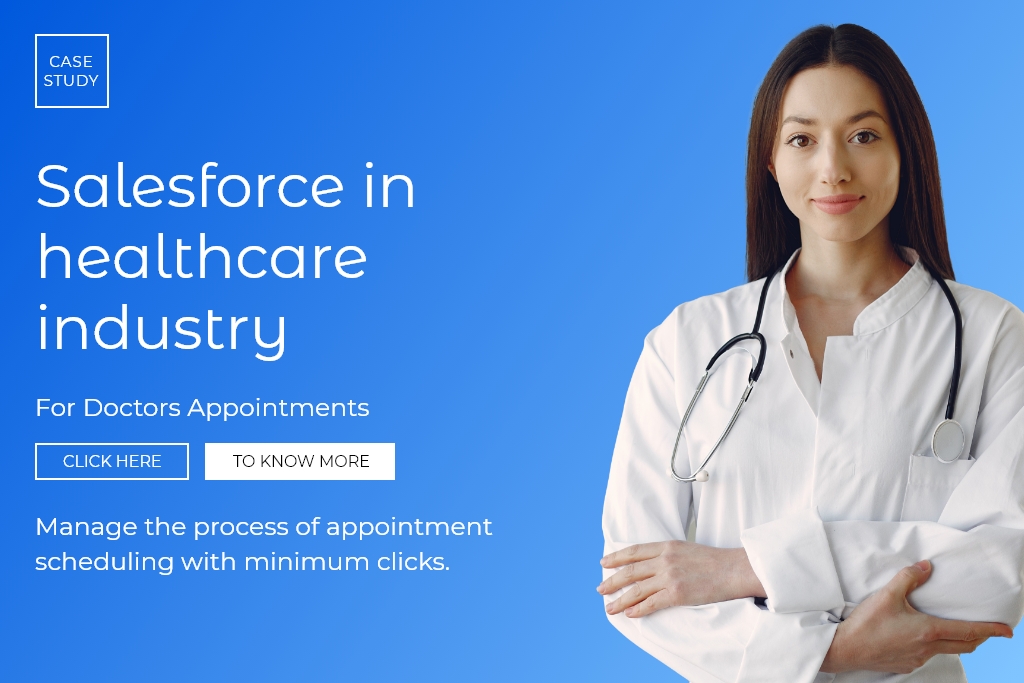
8. Care Program Management
Health Cloud allows organizations to create and manage structured care programs, supporting preventive care and chronic disease management.
- Chronic Disease Management: Track patients with conditions like diabetes, hypertension, or asthma, and monitor their adherence to treatment plans.
- Preventive Care Programs: Organize vaccination campaigns, screening initiatives, and wellness programs.
- Patient Enrollment and Tracking: Automatically enroll eligible patients in programs and track progress against defined milestones.
- Outcome Measurement: Measure patient outcomes and program effectiveness to refine care approaches.
- Customized Program Templates: Easily deploy programs tailored to different patient populations or care settings.
Benefits for Stakeholders:
- Providers: Improve long-term patient outcomes and adherence to care protocols.
- Patients: Receive structured guidance and proactive care support.
- Payers: Reduce costs by preventing complications and hospitalizations.
- Public Health Agencies: Run community-based programs efficiently and measure population health impact.
9. Telehealth and Remote Patient Monitoring
Remote care and virtual consultations are critical for modern healthcare. Salesforce Health Cloud services support telehealth and remote monitoring to expand access and improve patient safety.
- Virtual Consultations: Integrates telehealth platforms to manage video appointments and secure communication with patients.
- Remote Monitoring: Collects health metrics such as blood pressure, glucose levels, heart rate, and oxygen saturation from connected devices.
- Alerts for Abnormal Readings: Sends real-time notifications to care teams when patient metrics fall outside safe ranges.
- Remote Care Plans: Enables providers to create, track, and update care plans for patients outside hospital settings.
- Integration with Wearables: Syncs data from fitness trackers and smart devices to provide continuous patient monitoring.
Benefits for Stakeholders:
- Providers: Expand care reach and maintain continuous monitoring of patients with chronic or acute conditions.
- Patients: Receive timely interventions, reduce hospital visits, and manage health from home.
- Payers: Reduce costly hospitalizations and improve patient adherence to care protocols.
- Administrators: Streamline remote care operations and optimize staff allocation.
10. Automated Workflow and Task Management
Automation in Health Cloud reduces administrative burden, ensures timely interventions, and supports consistent care delivery.
- Task Assignment and Tracking: Automatically assign care tasks based on role, specialty, or patient need.
- Workflow Automation: Trigger reminders, escalations, and approvals for follow-ups, lab reviews, or care plan updates.
- Care Plan Updates: Automatically adjust patient care plans based on new clinical data or changes in condition.
- Notifications and Alerts: Sends real-time alerts for missed appointments, abnormal results, or pending tasks.
- Administrative Automation: Streamline scheduling, patient registration, and document management.
Benefits for Stakeholders:
- Providers: Focus on patient care instead of repetitive administrative tasks.
- Patients: Receive timely follow-ups and uninterrupted care.
- Payers: Ensure care protocols are followed, reducing preventable claims.
- Administrators: Increase operational efficiency and reduce human error in daily workflows.
Find the complete details on the offerings of Salesforce Health Cloud Implementation Services.
Conclusion
Salesforce Health Cloud services provide a powerful, integrated platform that transforms how healthcare organizations manage patient care, operational workflows, and population health. By combining ten core features, Patient 360 View, Care Team Collaboration, Personalized Patient Engagement, AI-Powered Analytics, Data Security and Compliance, EHR/EMR Integration, Health Analytics and Reporting, Care Program Management, Telehealth and Remote Patient Monitoring, and Automated Workflow & Task Management, Health Cloud enables providers, payers, and administrators to deliver connected, proactive, and efficient care.
With Patient 360 View, care teams gain a complete understanding of each patient, while Care Team Collaboration ensures seamless communication and coordination. Personalized Patient Engagement strengthens relationships and improves adherence, and AI-Powered Analytics supports predictive, data-driven care. Data Security and Compliance safeguards sensitive health information, and EHR/EMR Integration ensures a unified, interoperable ecosystem.
Additionally, Health Analytics and Reporting provides actionable insights for better clinical and operational decisions, while Care Program Management enables structured, preventive, and chronic care initiatives. Telehealth and Remote Patient Monitoring expand access and allow continuous care outside traditional settings, and Automated Workflow and Task Management reduces administrative burden and ensures timely interventions.
Collectively, these features help healthcare organizations enhance patient outcomes, improve operational efficiency, reduce costs, and strengthen engagement across the care continuum. Adopting Salesforce Health Cloud services is not just a technological upgrade; it is a strategic investment in future-ready, patient-centered healthcare.


